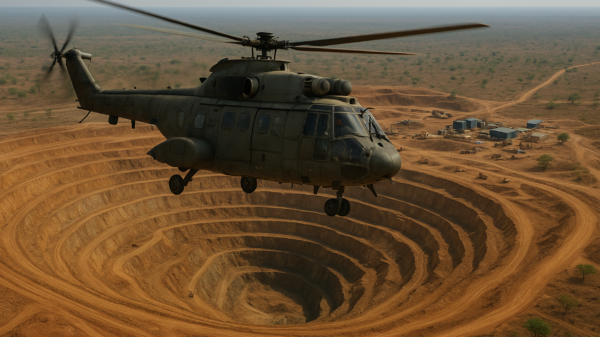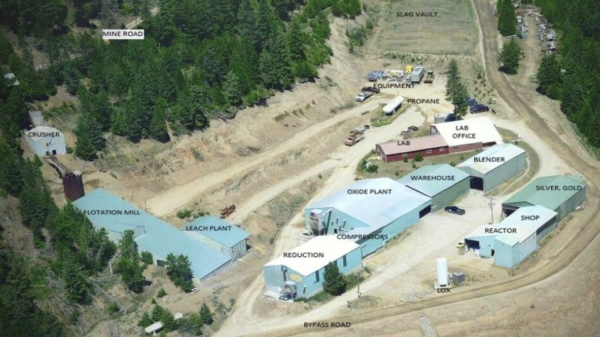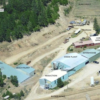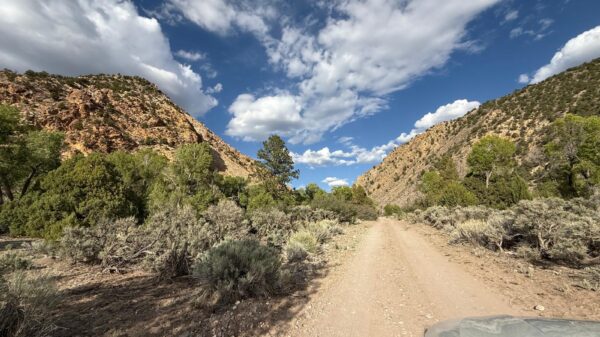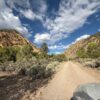President Biden established a new national monument in the Grand Canyon to safeguard territories that hold deep significance for indigenous communities while enacting a permanent prohibition on fresh uranium mining claims within this region.
Announced on Tuesday, the designated area spans nearly 1 million acres and underscores a commitment to preserving both cultural heritage and environmental integrity.
The Baaj Nwaavjo I’tah Kukveni–Ancestral Footprints of the Grand Canyon National Monument is Biden’s fifth designation in the past 10 months. This monument encompasses federal lands adjacent to the Grand Canyon National Park in northern Arizona. The management of these lands falls under the purview of both the Forest Service and the Bureau of Land Management, as stated by the White House.
A commission specially established for this purpose will facilitate co-management of the monument by a dozen Native American tribes in collaboration with federal agencies.
The recently designated national monument covers the origins of the Colorado River. Additionally, it holds immense cultural significance as the ancestral homeland for multiple tribes. The name “Baaj Nwaavjo” translates to “where tribes roam” in the Havasupai language, while “I’tah Kukveni” in the Hopi language signifies “our footprints.”
“Establishing the Baaj Nwaavjo I’tah Kukveni – Ancestral Footprints of the Grand Canyon National Monument honors our solemn promise to Tribal Nations to respect sovereignty, preserves America’s iconic landscapes for future generations, and advances my commitment to protect and conserve at least 30 per cent of our nation’s land and waters by 2030,” Biden said in a statement.
Throughout his presidency, Biden has taken steps to enhance protections for significant landmarks. This includes restoring and expanding the safeguarding of the Bears Ears and Grand Staircase-Escalante national monuments in Utah.
https://www.youtube.com/watch?v=3kooBdXto04
Read more: CanAlaska Uranium starts $10M winter drill program in Athabasca Basin
Read more: F3 Uranium finds high radioactivity during summer drilling campaign in Saskatchewan
Mining industry representatives to contest the decision
Back in 2012, the Obama administration had instituted a prohibition on fresh mining activities on federal land within the region. However, these safeguards are set to expire by 2023. The recent designation aims to provide enduring protection to the area, ensuring its preservation indefinitely. Representatives from the mining industry have expressed their intention to contest this decision.
The contested areas hold ancestral importance for the Navajo Nation, Hopi tribe, Ute Indian tribe, Ute Mountain Ute tribe and the Zuni Pueblo. These actions were prompted by the previous administration’s decision to open up the region for drilling and mining.
As per a White House fact sheet, the newly established monument’s primary purpose is to safeguard an array of cultural and sacred sites, each holding immense significance for Tribal Nations in the Southwest.
Biden also instituted a 20-year prohibition on drilling near New Mexico’s Chaco Canyon, a site of historical significance among Native American communities and one of the oldest in the nation.
Encompassing three distinct sectors to the south, northeast and northwest of the Grand Canyon National Park, the monument’s boundaries are delineated by landmarks like the Kanab watershed boundary, Kanab Creek drainage to the northwest, the Havasupai Indian Reservation and Navajo Nation to the south and stretching from Marble Canyon to the edge of the Kaibab Plateau on the northeast side.
“I made a committment as president to respect the tribal sovereignty, to honour the solemn promises the United States made to tribal nations, and fulfill federal trust and treaty obligations,” said President Joe Biden at the unveiling.
The lands designated as part of the national monument feature intricate deep canyons laced with streams and creeks that eventually merge into the Colorado River. This river, a lifeline for millions across the Southwest, serves as a crucial source of drinking water.
President Biden’s recent executive authority decision to establish the national monument transpired approximately two weeks after his creation of the Emmett Till and Mamie Till-Mobley National Monument. This latter monument commemorates three sites connected to Emmett Till, a 14-year-old Black youth whose tragic lynching in 1955 by two white men in Mississippi became a catalyst for the modern civil rights movement.
Read more: NevGold forms B.C. subsidiary to focus on Ptarmigan
Read more: NevGold intercepts quartz veining on the surface of Nutmeg Mountain
Mining claims established after 2012 will be exempt
Currently, there are no active uranium mines in Arizona, although the Pinyon Plain Mine, located just south of Grand Canyon National Park, has been in the development phase for an extended period. Some other mining claims are still valid due to grandfathering.
Despite the monument designation, the federal government has clarified that approximately a dozen mines within the region that is now safeguarded against new claims could potentially proceed with operations. This exception is based on the fact that these claims were established prior to 2012.
.







